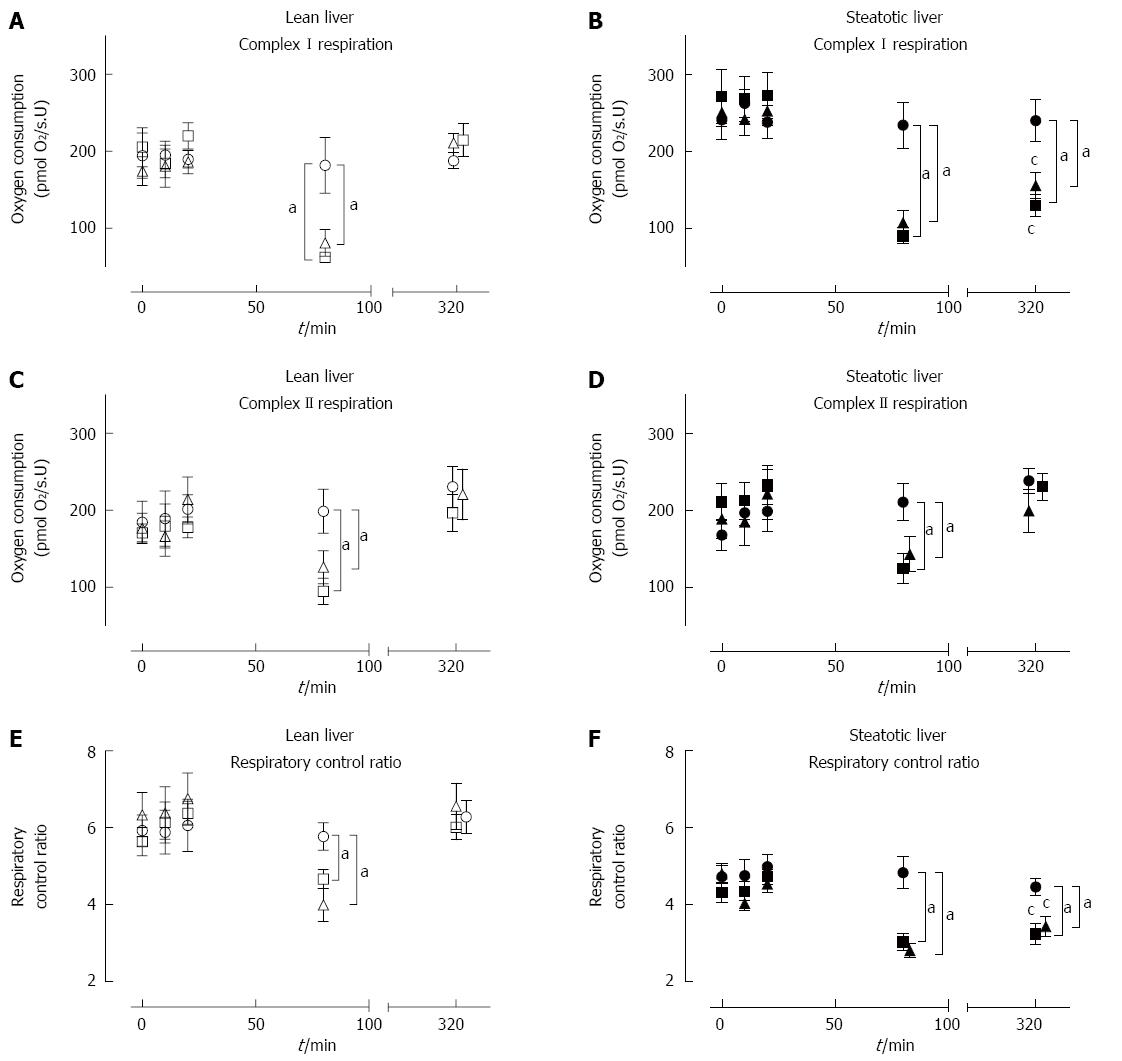Copyright
©The Author(s) 2016.
World J Gastroenterol. May 21, 2016; 22(19): 4673-4684
Published online May 21, 2016. doi: 10.3748/wjg.v22.i19.4673
Published online May 21, 2016. doi: 10.3748/wjg.v22.i19.4673
Figure 4 Mitochondrial function of lean and steatotic livers subjected to sham or ischemia-reperfusion injury with or without ischemic preconditioning.
Baseline MF was similar between lean and steatotic livers in all outcome measures. Lean-Sham and Steatotic-Sham had stable CI-OXPHOS (A, B), CII-OXPHOS (C, D), and RCR (E, F) throughout the procedure. CI-OXPHOS (A, B), CII-OXPHOS (C, D), and RCR (E, F) were significantly lower following 60 min of ischemia in Lean-IRI, Lean-IPC, Steatotic- IRI, and Steatotic-IPC livers compared to the corresponding sham group. Following reperfusion, CI-OXPHOS (B) and RCR (F) were significantly lower in Steatotic-IRI and Steatotic-IPC livers compared to Steatotic-Sham or lean livers, while CII-OXPHOS (D) returned to pre-ischemic levels comparable to Steatotic-Sham or lean livers (D). Data are shown as mean ± SE (n = 10 rat/group; Lean-Sham, open circle; Lean-IRI, open square; Lean-IPC, open triangle; Steatotic-Sham, closed circle; Steatotic-IRI, closed square; Steatotic-IPC, closed triangle). aP < 0.05 vs Lean-IRI; cP < 0.05 vs Lean-IPC (end of reperfusion). IRI: Ischemia-reperfusion injury; IPC: Ischemic preconditioning.
- Citation: Chu MJ, Premkumar R, Hickey AJ, Jiang Y, Delahunt B, Phillips AR, Bartlett AS. Steatotic livers are susceptible to normothermic ischemia-reperfusion injury from mitochondrial Complex-I dysfunction. World J Gastroenterol 2016; 22(19): 4673-4684
- URL: https://www.wjgnet.com/1007-9327/full/v22/i19/4673.htm
- DOI: https://dx.doi.org/10.3748/wjg.v22.i19.4673









